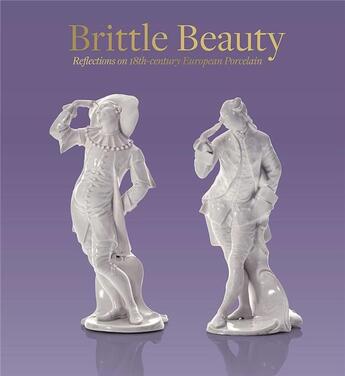-
Date de parution : 05/05/2023
-
Editeur :
Paul Holberton
-
EAN : 9781912168293
-
Série :
(-)
-
Support :
Papier
Résumé:
Brittle Beauty presents a superlative private collection of European porcelain, comprising radical, rare and in many cases unique pieces assembled over thirty years. Lavishly illustrated and insightfully researched, the book showcases eighty vessels and sculptures, and includes accounts of their... Voir plus
Brittle Beauty presents a superlative private collection of European porcelain, comprising radical, rare and in many cases unique pieces assembled over thirty years. Lavishly illustrated and insightfully researched, the book showcases eighty vessels and sculptures, and includes accounts of their patrons and former owners, many as eccentric as the works themselves. One striking attribute of porcelain is its reflective glaze. Mirror-like in a wider sense, Brittle Beauty: Reflections on 18th Century European Porcelain examines the context in which this porcelain was created - including cultural, political, topographical and ceremonial aspects. It also looks at related materials such as silver, textiles and glass. The 18th century was the golden age of porcelain in Europe, which had previously been dependent on precious imports from the Far East. The discovery of the formula for hard-paste porcelain in Dresden in 1709 inspired the establishment of manufactories throughout the Continent. However, its popularity was not purely commercial: porcelain - with its meld of art and science, beauty and intellect, East and West - became a symbol of Enlightenment culture for every princely court. Chinese and Japanese motifs and European forms were synthesised with deceptive subtlety; later, creations of pure fantasy emerged, often based on travellers' accounts of exotic lands. Familiar Occidental themes such as nature, hunting or archaeology were paralleled by ironic narratives of love, display and vanity. Porcelain, with its fragile allure, is uniquely expressive of the human comedy, yet its destiny has often been brutally tragic. This book features essays from eminent scholars. It also showcases a wealth of stunning imagery from Sylvain Deleu, who expertly photographed the pieces, many for the first time.
Donner votre avis














